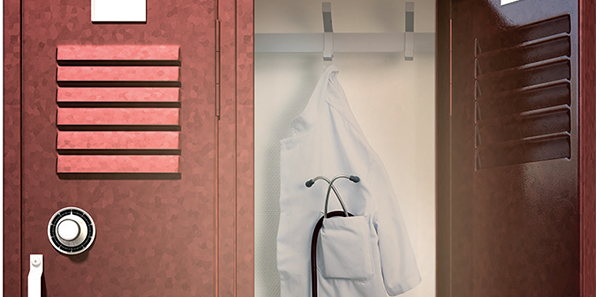
I read the October ACEP Now article “Spot and Treat Compartment Syndrome” by Dr. Long and Dr. Koyfman with interest. I found the article to have a number of very good points, including the inaccuracy of the history and physical examination. As someone who has been actively involved in this topic for many years, I have several observations.
Explore This Issue
ACEP Now: Vol 38 – No 12 – December 2019The article implies that obtaining the intracompartmental pressure is expected when entertaining the diagnosis and that it has a great sensitivity and specificity. The test characteristics of pressure measurement are probably excellent in the hands of someone who uses the technique frequently and acts upon those results. I would propose that person is not an emergency physician.
The problems with the emergency physician measuring the intracompartmental pressure are several.
- You must measure the pressure in each compartment. There are four compartments in the leg, two in the forearm, and nine (!) in the foot. Being sure that you have measured the pressure in each compartment and using the measurement tool properly are not a given. Then, what would you do with the result? I can’t imagine any surgeon will operate based solely on your measurements or say-so. They will insist on their own evaluation and/or measurements as the authors suggest in the article. Seemingly, this is a redundant and painful procedure for the patient. I have performed pressure measurements several times with an orthopedist, and they are not as straightforward as: Just do it.
- There will surely be an emergency physician who will avoid (consciously or subconsciously) entertaining the diagnosis if it requires an infrequently used and somewhat cumbersome procedure. Suggesting that intracompartmental pressure is an integral part of the diagnostic workup paints an imprecise and perhaps unnecessarily tortuous path for the emergency physician to make the diagnosis of compartment syndrome.
- Lastly, fasciotomy is the definitive treatment for compartment syndrome. This is a procedure that no emergency physician should be performing (or has delineated in their staff privileges to perform) regardless of the pressure results (except under the rarest of circumstances). The surgeon will be charged with acting based on their own evaluation that may or may not include pressure measurements.
Emergency physician intracompartmental pressure monitoring has a number of shortcomings. Consequently, let’s not make the process of diagnosing compartment syndrome more onerous than it really is by suggesting that the emergency physician should be performing a procedure that should be more appropriately performed by the person who will be the interventionist. Keep it simple.
So, how should emergency physicians handle cases where they are concerned about compartment syndrome? Call the surgeon and discuss the case.
Jim Webley, MD, FACEP
Pontiac, Michigan
The Authors Respond
We thank Dr. Webley for his insightful comments on the article. He brings to light several important considerations, including the need for early orthopedic involvement if compartment syndrome is suspected. Measurement of a compartment pressure is not necessary prior to orthopedic surgeon consultation. If the compartment pressure is assessed, the clinician obtaining the measurement must be familiar with the anatomy due to the differing compartments dependent on the specific location.
We also agree that fasciotomy is a difficult procedure, and most emergency clinicians are not trained to perform it. However, as Dr. Stuart Swadron says, “we need to know what we need to know, and one step further.” While rare, there are circumstances where an emergency clinician may need to perform this procedure, such as in an austere military setting with no surgical backup.
As Dr. Webley discusses, the key to diagnosis is clinical suspicion in the ED, as failure to consider the condition is why we often miss it. A patient with severe pain, recurrent need for analgesia, or objective evidence of neurovascular compromise warrants emergent discussion with the surgeon. Keep in mind that severe pain, which may be out of proportion to the exam or increase with passive stretch of the compartment, is often the only finding in acute compartment syndrome.
Brit Long, MD, FACEP; and
Alex Koyfman, MD, FACEP, FAAEM
Pages: 1 2 | Multi-Page



No Responses to “Reader Suggests We Take a Team Approach to Compartment Syndrome”